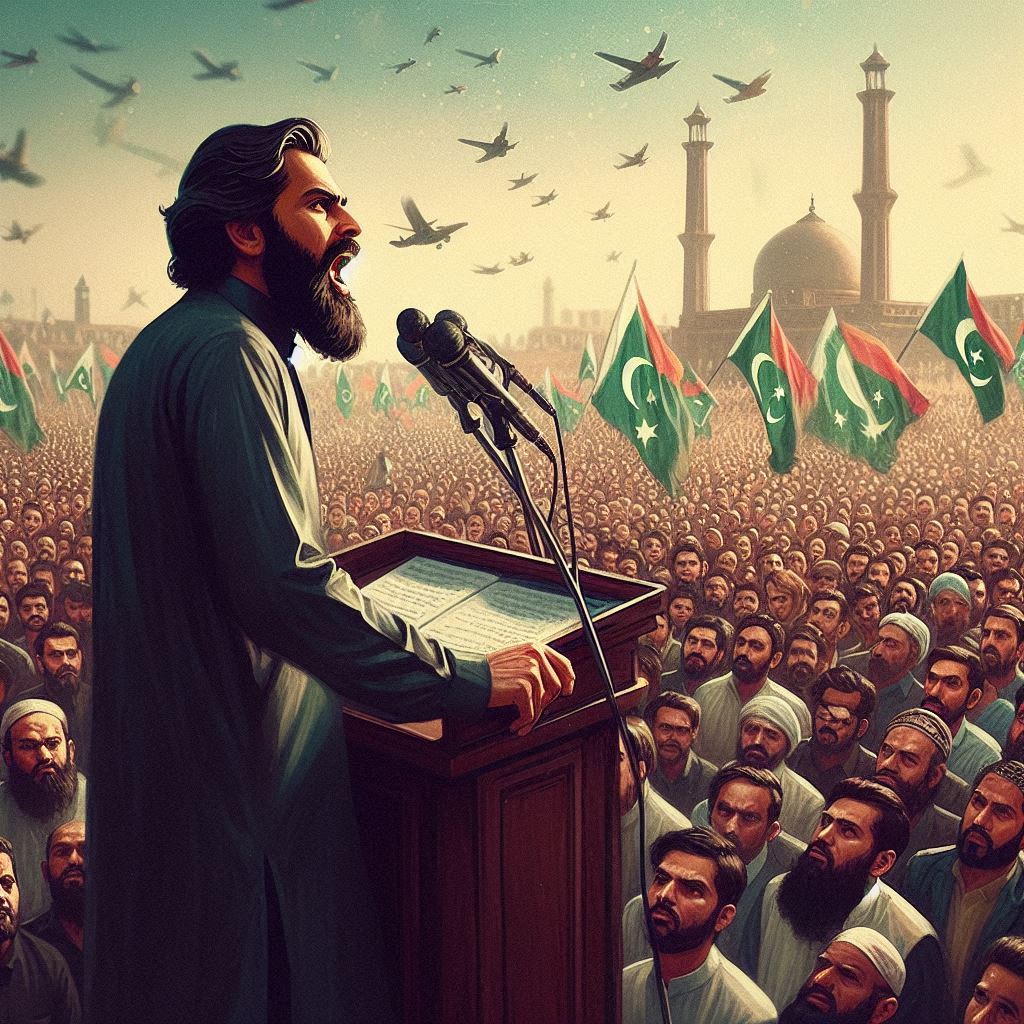By Eman Fatima for Invisiblites
What manipulates the people? Most will come up with the ideas of religious indoctrination, national security propaganda, political narratives, the creation of personality cults, and many more. But a tool that combines all of these is populism.
Populism refers to a range of political stances that emphasize the idea of “the people” juxtaposed against “the elite”. “Populism always involves a critique of the establishment and an adulation of the common people”, wrote Mudde and Kaltwasser. The term was formally developed in the 19th century and has been since applied to various politicians, parties, and movements, although rarely as self-description. It can range from anti-establishment, and anti-elite populism to religious populism, and ethno-populism. Populist movements in Pakistan often draw on nationalist sentiments and identity politics. The country’s history of military rule, dynastic politics, and endemic corruption has created fertile ground for a leader promising sweeping changes and a break from the past.
Socio-Economic Environment
Despite the evergreen slogans, Pakistan has not been able to ensure long-term economic prosperity. A small segment of the elite class continues to hoard national wealth. Back in the 1960s, “22 families dominated Pakistan”, whereas according to a recent report by UNDP, the top 20% control half of the national wealth. When people struggle to make ends meet, they look upon the leaders who promise swift and decisive economic relief. This tactic has been used by almost every democratic leader of Pakistan especially Zulfiqar Ali Bhutto and Imran Khan. While the former raised the slogan of “roti, kapra, makaan”, the latter is famous for his idea of “Naya Pakistan”.
Bhutto’s populism tapped into widespread economic discontent and inequality, inspired by the global trend of socialism and left-leaning policies as a reaction to inequality and exploitation. The 1960s and 1970s saw a rise in populist movements worldwide, with leaders like Juan Perón in Argentina and Gamal Abdel Nasser in Egypt appealing to the masses against perceived elite control. Post-colonial societies, including Pakistan, were grappling with national identity, economic independence, and the legacy of colonial rule. As part of his socialist agenda, Bhutto nationalized major industries, banks, and educational institutions. This move was aimed at reducing the control of the elite over the economy and redistributing resources more equitably. To bridge the disparities between the bourgeoisie and the proletariats, he introduced land reforms aimed at redistributing land from landowners to landless farmers and the removal of feudalism. Bhutto’s government enacted labor reforms to protect workers’ rights and improve their working conditions.
While Bhutto’s reforms successfully mobilized the masses and challenged the elite, their effectiveness in addressing the root causes of populism was mixed. His policies brought short-term relief and political engagement but failed to deliver sustainable economic growth or structural social change. His populism afforded his family the throne of Sindh and ended up being the same elite that Bhutto challenged.
Pakistan’s Crowd Moment – Invisiblites
Pakistan’s story lingered on and there emerged Imran Khan. Khan’s Naya Pakistan was rooted in social reforms and anti-corruption rhetoric. He accused the traditional political elites of every sin under the sun. From criticizing dynastic politics to the elitist education system, Khan successfully created his cult of personality. Through policies like Ehsaas Program, Sehat Program, Rashan program, Kamyab Jawan, and many more, Khan lived his populism to the tee. However, Khan too was unable to deliver economic success and structural change. One thing that Khan did revolutionize though was the use of social media.
The Rise of Social Media
Imran Khan’s rise in Pakistani politics was significantly bolstered by his adept use of social media. Breaking barriers and challenging the status quo, social media is inherently populist. Khan used it perfectly to communicate his populist messages, connect with a broad audience, and mobilize support. Twitter, Facebook, and other platforms were used for direct connection with the populace. Online campaigns and hashtags mobilized youth and first-time voters, helping to create a large, energized base crucial for any populist movement.
Like many populist movements worldwide, Khan’s rhetoric divided society into “the people” versus “the elite.” He portrayed himself as a defender of the common man against a corrupt, out-of-touch political class, mirroring populist leaders like Donald Trump in the US, Narendra Modi in India, and Rodrigo Duterte in the Philippines. Khan’s use of social media as a classic tool of neo-populism made him omnipresent to his supporters. Bypassing conventional gatekeepers, Khan turned himself from a part-time fringe politician to a messiah for change.
Conclusion
Pakistan’s socio-economic conditions present a perfect opportunity for the populist in waiting. A fair democratic process will choose those who promise to speak on behalf of the common people and succeed in highlighting themself as the sole representative of the people. But any meaningful change will need courage and tough decisions in addition to public support. In this sense, Pakistan’s conundrum is similar to that of major global powers. Those who are popular will not compromise short-term benefits and those who will compromise are not popular.
The author is a student of BS International Relations at GCUL. She is interested in politics, global affairs, conflict studies, and international relations.
Photo credit: Microsoft Copilot
